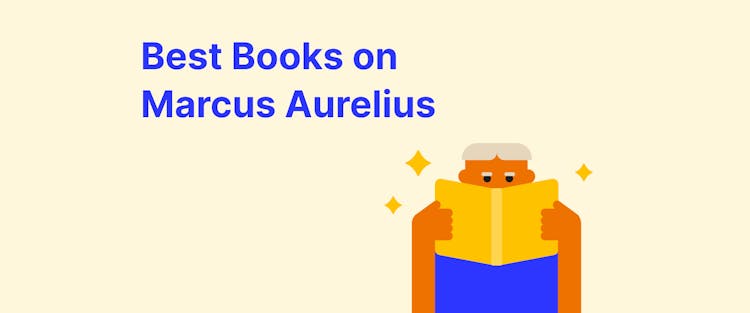Writing a children's book isn't just about putting cute characters on a page. Creating stories that truly connect with young readers takes specific skills, careful planning, and a deep understanding of how kids think.
Whether you're writing your first picture book or branching into middle-grade novels, learning how to write a children's book the right way can make the difference between a manuscript that sits in a drawer and one that changes lives.
Quick answer: How to write a children's book
Identify your target age group (toddlers, early readers, middle grade)
Develop relatable characters kids can connect with
Create a simple but engaging plot structure
Write in age-appropriate language with active voice
Include a clear lesson or theme
Revise with feedback from beta readers
Consider working with a professional illustrator
If you want quick inspiration for themes, character arcs, or storytelling structure, Headway's short book insights can help you learn the essentials fast. It's an easy way to pick up creative techniques and writing principles without committing to long reading sessions.
Try Headway to sharpen your writing skills in just a few minutes a day.
Understanding your audience
The first step to creating a children's book isn't the book idea; it's understanding your audience, whether middle grade or younger. In his book 'Craft in the Real World,' Matthew Salesses talks about why it's so important to consider who your audience is. Salesses explains that, for children's books, this means being hyper-aware of young readers' backgrounds and how they might understand the story.
By being more aware of diversity and opinions, you can create a book that speaks to children across cultures. By pinpointing the age range you want to focus on, you can identify age-appropriate language and themes. You can also choose whether board books or picture books would be a better option.
Here's what most new writers get wrong: they write for the parents, not the kids. Big mistake.
Joseph Campbell explains another interesting point in 'The Hero with a Thousand Faces.' He tells us that each stage of a character's journey can teach children a lesson or help them develop their values. This makes the story not only entertaining but also educational.
📘 Learn from the best authors with Headway.
Your 6-step guide: How to write a children's book that kids love
You want to learn how to write a children's book, so now it's time to get started.
In his book 'On Writing,' bestselling author Stephen King explains why writing every day is a useful tip. Daily writing helps you create a consistent habit, refining your tone of voice and even your book idea. The more you write, the more you'll connect with young readers while, of course, enjoying the process yourself.
King is also an advocate for writing the first draft in a carefree manner. He explains that if you complete your first round of writing without worrying about feedback or judgment, the words will flow more easily. Then, you can edit with a deeper awareness of your audience and the overall theme.
Write with the door closed, rewrite with the door open. — Stephen King
This concept is particularly important when writing children's books because the lack of constraints allows your imagination to soar to the same heights as your audience. Ultimately, writing with the shackles on limits creativity and isn't any fun at all.

Step 1: Find your story idea (What kids actually want to read)
You might already have a children's book idea in mind; if not, now is the time to brainstorm for one. If you already have a book idea, this is a good opportunity to refine it further. Remember, the idea must resonate with children within your target age range — this is your target audience.
Matthew Salesses explains how traditional definitions of writing are restrictive, especially when writing kids' books. Instead, focus on the structure, character development, and overall arc of stories from various cultures and experiences. Doing so makes your story more accessible and relatable to a broader range of children.
If you want to focus on a particular character's voice, do so. Salesses criticizes typical models that give significance to certain voices over others, whether in adult fiction or children's.
For a marginalized writer writing to a normative audience, the writer has to be wary of normative craft. Much of what we learn about craft (about the expectations we are supposed to consider) implies a straight, white, cis, able (etc.) audience. It is easy to forget who we are writing for if we do not keep it a conscious consideration, and the default is not universal, but privileged. — Matthew Salesses.
Ultimately, this means not assuming that you have to come up with a concept and idea that others deem "acceptable." Think about those in your target age group and cater to them.
📘 Discover character-building techniques on Headway.
Step 2: Create characters kids can't stop talking about
For early readers, it's all about the imagery and the characters. So, it's vital to create a main character and several supporting ones that children can deeply connect with when writing a children's book. Characters should be relatable and engaging, allowing the child to see themselves within the story.
Think about the last children's book you couldn't put down. What made those characters stick? That's what you're aiming for.
In 'The Hero With a Thousand Faces,' Joseph Campbell highlights the importance of creating characters children can root for. That means having a relatable hero who solves problems a child might encounter. You implement this idea with vivid settings and imaginative scenarios that capture the child's attention and really get them thinking.
The usual hero adventure begins with someone from whom something has been taken, or who feels there is something lacking in the normal experience available or permitted to the members of society. The person then takes off on a series of adventures beyond the ordinary, either to recover what has been lost or to discover some life-giving elixir. It's usually a cycle, a coming and a returning. — Joseph Campbell.

Step 3: build a plot structure that keeps pages turning
Kids' books need to have a simple but engaging plot structure that they can understand from their point of view. The story should include a problem, things that get in the way, and an overall solution. In his bestselling book 'Unleash the Power of Storytelling,' Rob Biesenbach talks about the importance of a strong structure, including a clear beginning, middle, and end.
In a child's book, this structure helps early readers connect with the narrative and learn from it. He also advises writers to ask questions before they start writing to give a clear view of what they want to achieve.
Your plot doesn't need to be complex. In fact, the simpler, the better. Confused? Let us explain.
What did you want to be when you were growing up? What does your child think you do? What's the best lesson you learned from a parent, friend, or mentor? How did you get started? What do you love about your job? How does what you do make a difference to others? What frustrates you? What makes you proud? Who are your heroes and why? — Rob Bisenbach

We can also learn a lot from Joseph Campbell's outline of a basic structure for hero-related stories. He calls this the 'Hero's Journey.' The first stage is often a regular situation in which the hero finds themselves, before receiving a call to go on an adventure. They might refuse that call because they're scared of change, but they often meet a mentor who encourages them to go. Remember Gandalf and Frodo in 'The Lord of the Rings'?
The main character ventures into the unknown, facing challenges and tests along the way. They meet other characters and form friendships. The main challenge arrives toward the end and usually involves a big hurdle or frightening enemy to confront. This is when the hero really shines, and major lessons are learned.
This format is easy to follow and effective as it forms the backbone of the main plot, be it a short story or longer. It's also ideal for children's book authors because it focuses on learning lessons throughout their stories.
📘 Master storytelling with Headway's book summaries.
Step 4: Master age-appropriate writing (without talking down)
Children's books differ significantly from adult books in their style and language. Children's books must be simple and concise, with words that paint pictures.
Stephen King advises using his writing skills toolbox of vocabulary, grammar, and style. Simple language is crucial here, helping the child engage with the story. Of course, the words also need to be age-appropriate. Avoid anything too complex, and use active voice and vibrant language that gets straight to the point.
Rob Biesenbach has similar advice, but he takes it a step further by using words that stir emotions. Creating emotional connections helps the child remember the story and the lessons contained within it.
He also mentions the art of showing rather than just telling. This is extremely important in children's books because vivid descriptions and actions help to paint a picture much more effectively. It allows the child to immerse themselves completely in the world you've created for them.
📘 Sharpen your writing skills with Headway.
Step 5: Bring your story to life with the right illustrations
Every great children's book has wonderful illustrations that work alongside the storyline. The good news is that you don't need to create these yourself! You can work with a professional illustrator to create your entire children's picture book or just the images for your story and the cover design. So, it's important to understand exactly what you want to achieve.

Colorful and relevant book illustrations help children create a clearer mental picture of the story. It's an add-on that takes their imagination a step further. By understanding the type of illustrations you want, you can look for a designer who can capture your ideas perfectly.
Step 6: Polish your manuscript until it shines
The final step is to edit the book and ask for feedback from peers and a book editor. This last step is often the most difficult, as nobody enjoys receiving feedback they may not deem as positive. Rob Bisenbach stresses the importance of proofreading and revising the story to enhance its power. This is particularly important for children's book writers as it helps refine the story and keep it engaging for a young audience.
Here's the truth nobody tells you: even experienced authors make these mistakes. The difference? They catch them early.
Regarding feedback when writing books, create a focus group of children and adults with varying backgrounds and take their comments on board. Self-editing is a complicated process, but honesty and openness will see you through.
"To write is human, to edit is divine." - Stephen King
📘 Get editing wisdom from publishing pros on Headway.
What makes a children's book memorable?
Before you worry about mistakes, let's talk about what gets it right. The books that stick with kids for life share these qualities:
Emotional truth: Kids spot fake feelings instantly, so your characters need real struggles.
Respect for the reader: Never talk down. Kids are smarter than most adults realize.
A satisfying ending: Not necessarily happy, but complete. Kids need closure.
Something to discover: The best children's books reward re-reading.
Think about your own childhood favorites. What made them special? That's your north star.
Common pitfalls to avoid when writing a children's book

When creating your children's book, there are some common pitfalls you need to be on the lookout for. After all, you want to craft the best book possible.
Overcomplicating the story
Children's books should be simple while packed with imagination. An overcomplicated plot or a complex storyline might confuse young readers and reduce their engagement. Remember, a child's attention span is much shorter than an adult's. So, it is crucial to maintain a clear storyline that children can follow and ensure that any plot twists or conflicts are resolved in a way that is understandable to them.
2 Not aligning with the age group
This point links very closely with the last one. One of the most crucial elements in writing a children's book is understanding the developmental stage and interests of your intended age group. Vocabulary, concepts, sentence structure, and themes should be appropriate for your target audience.
For example, books for ages 3-6 might focus more on sounds, simple concepts, and pictures, while books for older children can tackle more complex themes and narratives.
3 Poor illustrations
Illustrations are not just decorative elements in children's books; they are crucial tools for storytelling and engagement. Poor illustrations, such as low quality, relevance, or alignment with the story, can mislead, confuse, or distract the child from the story, or simply fail to captivate their attention.
It's also important to note that illustrations should reflect diversity and inclusivity, allowing every child to see themselves and others positively represented.
4 Ignoring reader engagement
Children's books should be interactive and engaging with direct questions, prompts for drawing or other activities, or text that requires the child to do something before proceeding. Books that fail to grab attention can come across as preachy or textbook-like and might not hold a child's focus for long.
5 Neglecting read-aloud appeal
Many children's books are read aloud by parents, educators, or guardians. A common pitfall is neglecting the read-aloud appeal, which includes rhyming text, wordplay, and a suitable pace.
6 Overlooking cultural and social sensitivity
Children's books must promote understanding and respect for different cultures and social backgrounds. Authors should always avoid stereotypes and include a wide range of characters and settings that reflect diversity for the first time.
📘 Learn from children's book experts on Headway.
Marketing and publishing tips
When you've poured your heart and soul into creating a children's book, the next steps of publishing and marketing your work are crucial to its success. Whether you choose self-publishing or traditional publishing paths, each has advantages and challenges, and your marketing strategies can significantly influence your book's success.
Traditional publishing
Traditional publishing involves partnering with publishing houses to handle the publication and distribution. A publishing company provides professional editing and book design, along with established networks to help your book reach bookstores and libraries. Of course, being chosen by a recognized publisher can add prestige, and you may receive advanced royalties.

However, getting a publishing deal can be challenging and often requires an agent. In addition, publishers have a say in the final product, which can take years from acceptance to publication.
Self-Publishing
Self-publishing gives you control over every aspect of your middle-grade and below books, from writing to marketing. Platforms like Amazon Kindle Direct Publishing are popular. With this route, you make all decisions related to your book's content and design. Without a publisher, you keep a larger portion of the profits, and publishing can be quick once the book is ready.
The downside is that costs for editing, design, and marketing via social media fall on you. It's also harder to get English self-published books into bookstores and libraries, and, yes, all marketing efforts need to be handled by you or hired professionals.
Ultimately, the choice is yours, so it's important to weigh the pros and cons of each to make an informed decision.
Write better children's books with guidance from Headway
You've learned the fundamentals of how to write a children's book. Now it's time to take your skills to the next level.
Here at Headway, we've packed thousands of book summaries from successful authors who've mastered the craft. You'll get actionable advice from people like Stephen King on developing your writing routine, insights from publishing professionals on what editors really want, and techniques from bestselling children's authors who know exactly what makes kids keep reading.
You don't need to spend weeks reading dozens of full books. In just 15 minutes, you can absorb the key lessons that took these authors years to learn. Whether you're commuting, waiting in line, or taking a quick break, Headway fits into your real life.
Download Headway today and transform your dream of writing a children's book into a published reality. Your young readers are waiting.
Frequently asked questions about how to write a children's book
How to write a children's book and get it published?
Start writing your own children's book by identifying your readers' target age (young children, middle-grade books, or young adult), developing relatable characters, and crafting an age-appropriate plot. For publishing, choose between traditional publishers that require literary agents and self-publishing platforms like Amazon KDP. Both paths require professional editing and effective book marketing strategies to reach readers.
How to write a children's book with AI?
Use AI tools like ChatGPT or Gemini to generate story ideas and draft text for your children's literature project. Tools like Midjourney or Sora can create illustrations for chapter books or picture books. However, you must heavily edit AI output, add substantial human creativity, verify all content for originality, and disclose AI use when publishing. AI should assist, not replace, human authorship.
How do you start writing a children's book for beginners?
Begin by selecting your target audience — whether toddlers, year-old readers, or middle-grade books. Study types of children's literature in your chosen category. Develop a simple concept with relatable characters that young children can connect with. Write daily in age-appropriate language. Consider book marketing early and decide between traditional or self-publishing for your own children's book project.
Can I legally write a book using AI?
Yes, you can absolutely use AI when writing children's literature — it's perfectly legal. The only nuance is copyright: the U.S. Copyright Office won't protect work that's created entirely by AI, so you still need to shape the story yourself. As long as you add real human input — editing, rewriting, structuring, and contributing original ideas — the final book can be protected. It's also a good idea to keep notes on what you've created yourself, just in case you ever need to show how the work was made.
Can I sell a book written by AI?
Yes, but with important limitations. Amazon KDP requires disclosure of AI-generated content for text and images. Without substantial human authorship, your book lacks copyright protection — meaning others can freely copy it. For successful book marketing and legal protection, significantly edit AI drafts, add original insights, and ensure your own children's book reflects genuine human creativity throughout.










